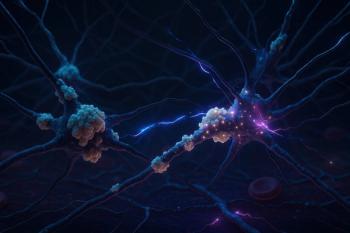
- Vol 38, Issue 6
War—What Is It Good For? Perhaps Modern Psychopharmacology
Sometimes the war represented more of a hiatus in ongoing research, which was later resumed. In other cases, it led to displacement or imprisonment.
CLINICAL REFLECTIONS
Modern psychiatry—and modern psychopharmacology—is a relatively young field. In fact, the word antidepressant was coined in 1952, tranquilizer in 1953, and antipsychotic was first used at a medical meeting in 1956—and the acceptance of all was slow. Over the next 2 decades, these types of medicines were developed. Interestingly, most of the drug discoveries occurred inadvertently, often beginning with a chance observation by a physician or scientist who was looking for something else.
Key Figures From World War II
Many key figures in modern psychopharmacology were caught up in World War II in some way.1 For instance,
Prominent Figures From Earlier Wars
Other influential scientists emerged from earlier battles. William A. Hammond, MD, who made observations with lithium in bipolar disorder in the 1870s, was Surgeon General of the Union Army during the American Civil War.1 Hans Berger, MD, served in the German cavalry in 1892 and was almost killed in a riding accident. His resulting curiosity about the workings of the nervous system led to the discovery of human electroencephalography. His story continued and ultimately included suffering at the hands of the Nazis, who took over his university in the 1930s. Constantin von Economo, MD, the Austrian psychiatrist and neurologist who described encephalitis lethargica and the role of hypothalamic structures in sleep and waking, was an army pilot in northern Italy in 1916.1 Charles Sherrington, FRCP, FRCS,whose studies with Edgar Adrian, MD, clarified the processes of nerve cell communication, worked in a shell factory 13 hours a day during World War I, while Adrian treated war casualties at St Bartholomew’s Hospital in London. Alexander Fleming, FRS, FRCS, whose later discovery of penicillin profoundly affected psychiatry by providing a treatment for tertiary syphilis, served in World War I, in which his studies of evolving wounds led to his later discoveries.3
Developments in Neuroscience
The broader field of neuroscience developed in the post–World War II years, with its founders having pivotal wartime experiences. Otto Loewi, PhD, whose experiments confirmed chemical transmission across synapses, was imprisoned by the Gestapo on the night of the German invasion of Austria. He was stripped of all his possessions, but he was later allowed to emigrate on the condition that he transfer the funds from the Nobel Prize he had earned in 1936 to a Nazi-controlled bank.2 An American self-taught scientist, Alfred Lee Loomis, DSc, JD, discovered the K-complex in the electroencephalograph and first classified the sleep stages, then went on to play a crucial role in developing military radar in World War II.2 Sir Alan Lloyd Hodgkin’s experiences living in wartime Britain, and involvement in radar research impacted him so deeply that much later, at age 78, he felt the need to return to the World War II years in his last major work,
The remarkable thing about these stories is the variability of these experiences.2 Sometimes the war represented more of a hiatus in ongoing research, which was later resumed. In other cases, it led to displacement or imprisonment. Sometimes the result was devastating and culminated in suicide, while in other cases it was a stimulus leading to advances in research. It is a good reminder that, sadly, war is intimately involved in the human condition, and more specifically, that in order to understand the blossoming of neuroscience and psychopharmacology in the 1950s and 1960s, it is useful to take into account the wartime experiences of the founders.
Dr Mendelson is a professor of psychiatry and clinical pharmacology (ret) at the University of Chicago. His recent books include
References
1. Mendelson WB.
2. Mendelson WB.
3. Mendelson WB.
4. Hodgkin A. Chance & Design: Reminiscences of Science in Peace and War. Cambridge University Press; 1992. ❒
Articles in this issue
over 4 years ago
The Opioid Addiction Crisis and Racism: A Long, Troubled Historyover 4 years ago
Avoid These Common Retirement Mistakesover 4 years ago
Modern Medieval Artistover 4 years ago
Exploring the Evolution of Depressionover 4 years ago
Can Epigenetics Promote Resilience Without Genetic Reductionism?over 4 years ago
The Final “P” in Pain ManagementNewsletter
Receive trusted psychiatric news, expert analysis, and clinical insights — subscribe today to support your practice and your patients.














